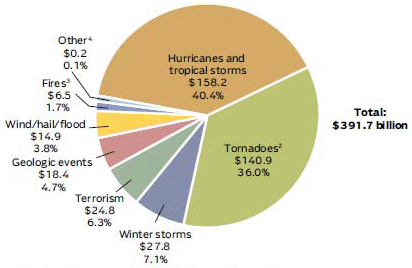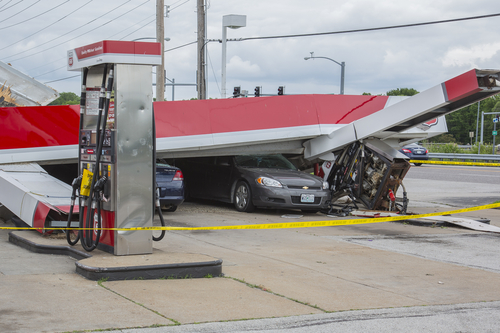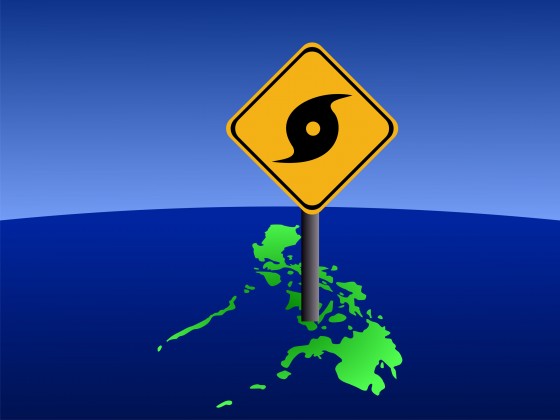The House Republicans’ proposed bill to extend the Terrorism Risk Insurance Act (TRIA), set to expire at the end of this year, is “encouraging,” but there are also concerns, insurance industry experts say.
Representative Randy Neugebauer (R-Texas) introduced the TRIA Reform Act of 2014 on June 17, which would modify and extend TRIA.
TRIA provides a government backstop for insurers and reinsurers in the event of a catastrophic terrorist attack. The proposed bill would extend the program for five years and make insurers more active participants in the market, according to American Banker. The proposed bill also distinguishes attacks that are nuclear, chemical, biological or radiological (NBCR) from other terrorist attacks and increases the industry’s cost for conventional attacks.
Earlier in June, the Senate Banking Committee approved a bill that would extend TRIA for seven years, increase insurers’ co-pay for all attacks from 15% to 20% after a deductible, and increase the threshold for mandatory recoupment from $27.5 billion to $37.5 billion.
“The House bill is a very encouraging sign, especially because it comes on the heels of the Senate bill (S.
B. 2244) a few weeks ago,” said Robert P. Hartwig, president and economist of the Insurance Information Institute. “Though the bills contain substantive differences, I think a compromise can and will be reached. Time is of the essence as the uncertainly in the markets is already causing disruptions in the form of exclusionary language and because it is an election year there are relatively few days left on the Congressional calendar.
”
American Insurance Association (AIA) President Leigh Ann Pusey lauded introduction of the bill, saying that it “adds to the growing momentum behind TRIA’s reauthorization in both the House and Senate. We urge the Committee to swiftly mark up the TRIA Reform Act and move it to the House floor for a vote before the August recess.”
The new law would progressively raise the program’s threshold following conventional attacks from $100 million to $500 million. Insurers would make a 20% copayment after a deductible in the wake of a conventional attack, compared to 15% for NBCR attacks.
Hartwig noted that the insurance industry has some concerns related to the “bifurcation” of NBCR and non-NBCR risks. “Under the bill, non-NBCR risk would be subject to the increased trigger which would rise from its current $100 million to $500 million by 2019,” he said. “Likewise, there’s concern about the increase in the industry’s co-share from 15% to 20%. In both instances, the increase in the industry exposure to potential loss could result in reduced capacity, particularly capacity originating with smaller insurers. The bifurcation also adds an unnecessary layer of complexity to the process.”
In a statement, Pusey also expressed concern “with certain provisions of the bill that could lead to decreased market capacity. Most notably, the creation of a bifurcated approach for nuclear, biological, radiological and chemical (NBCR) attacks vs. conventional attacks falsely assumes that the insurance market operates based on the same distinctions.” She said that differentiation based on the type of event introduces “needless complexity, creating potentially adverse consequences under the program and insurance market capacity.
We are also concerned about the steep increase in the program trigger and co-share, which could also lead to a reduction in capacity.”
Hartwig concluded that while the success of TRIA is “unambiguous, providing continuous benefits to the American economy at essentially no cost to taxpayers, the current resurgence of terrorism in Iraq reminds us that the threat of terrorism is omnipresent.”
He added that some TRIA opponents cite that the bill was originally designed as a temporary measure. “While that may be so, the past 13 years have demonstrated that the U.S. remains under constant threat. Last year’s Boston Marathon bombing made that crystal clear. Prior to the Marathon bombing there had been many unsuccessful terrorist plots—ranging from efforts to bring down airliners to bomb plots in several US cities.”
Neugebauer said he believes the TRIA Reform Act of 2014 will lead to a stronger private market, preventing U.S. taxpayers from making ongoing payments to support another federal program. The House banking committee will vote on the bill on June 18.




